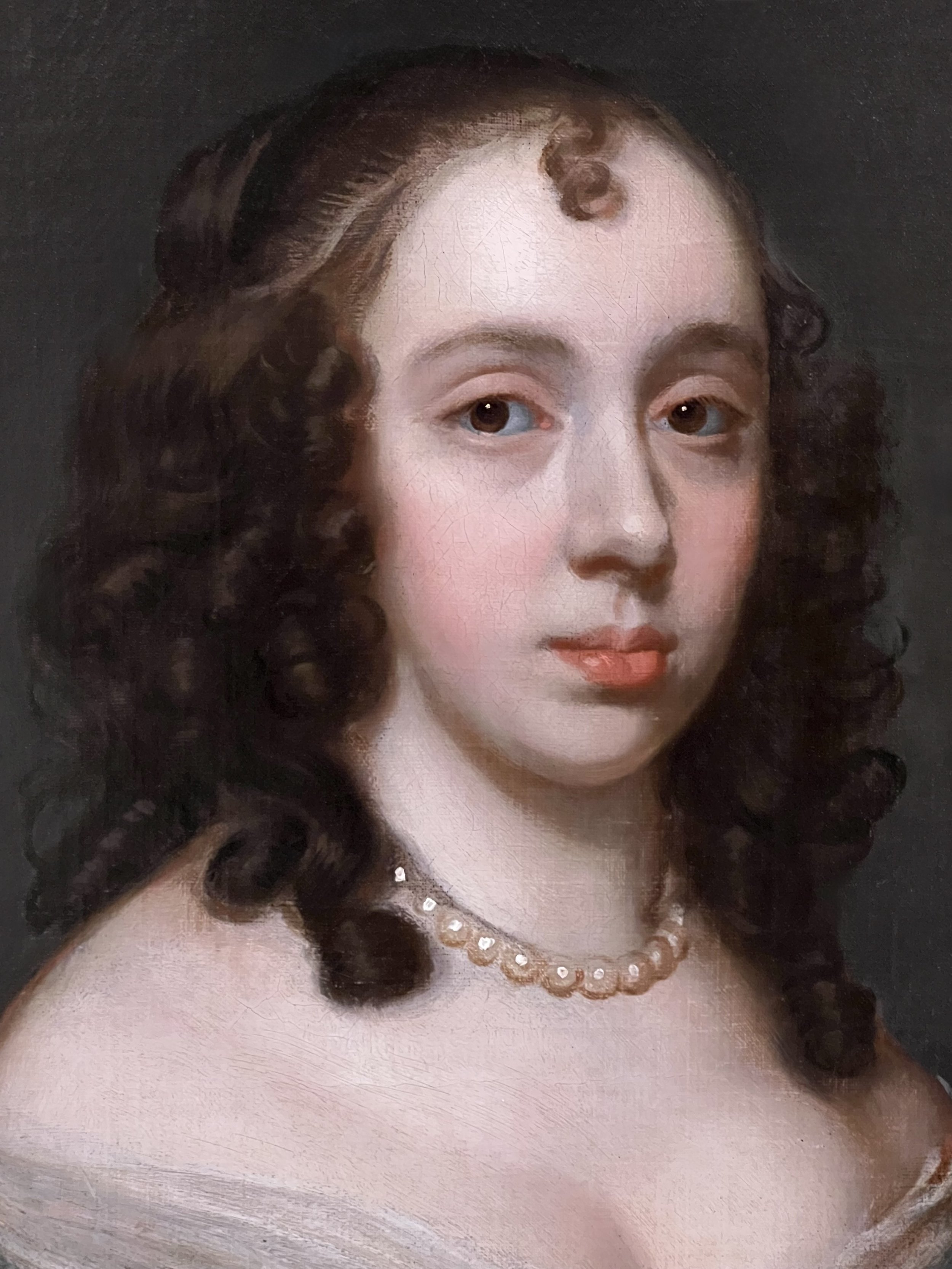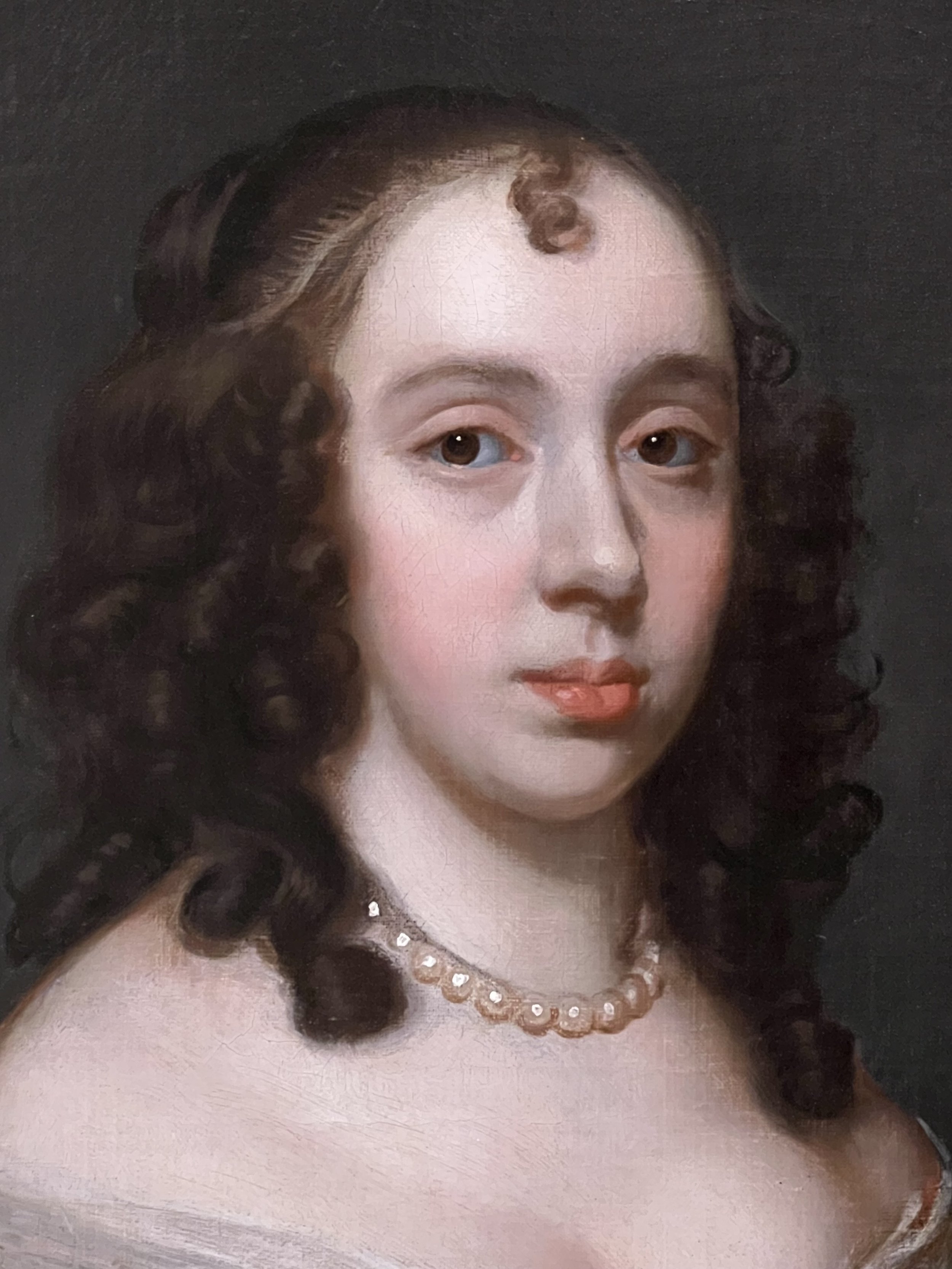
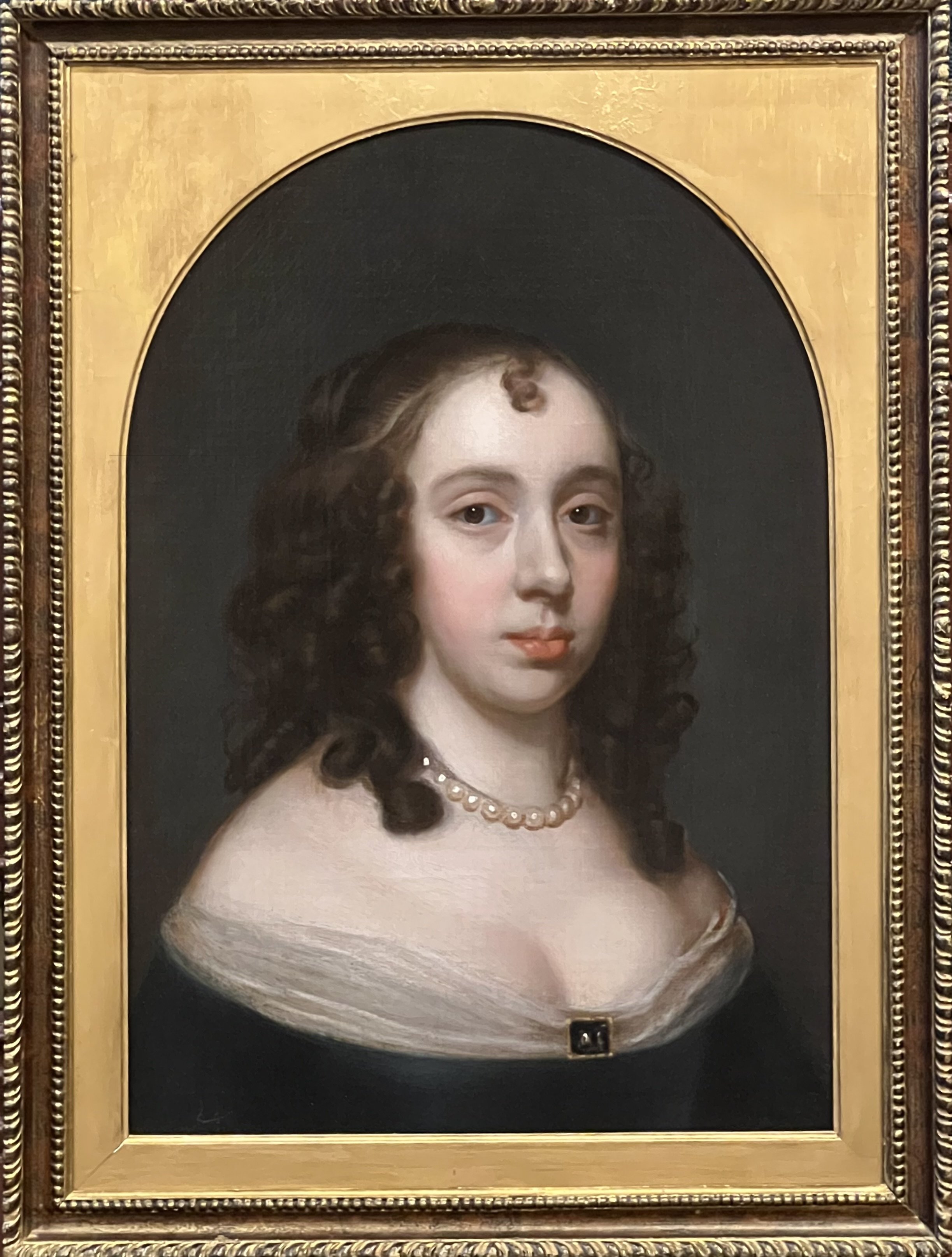
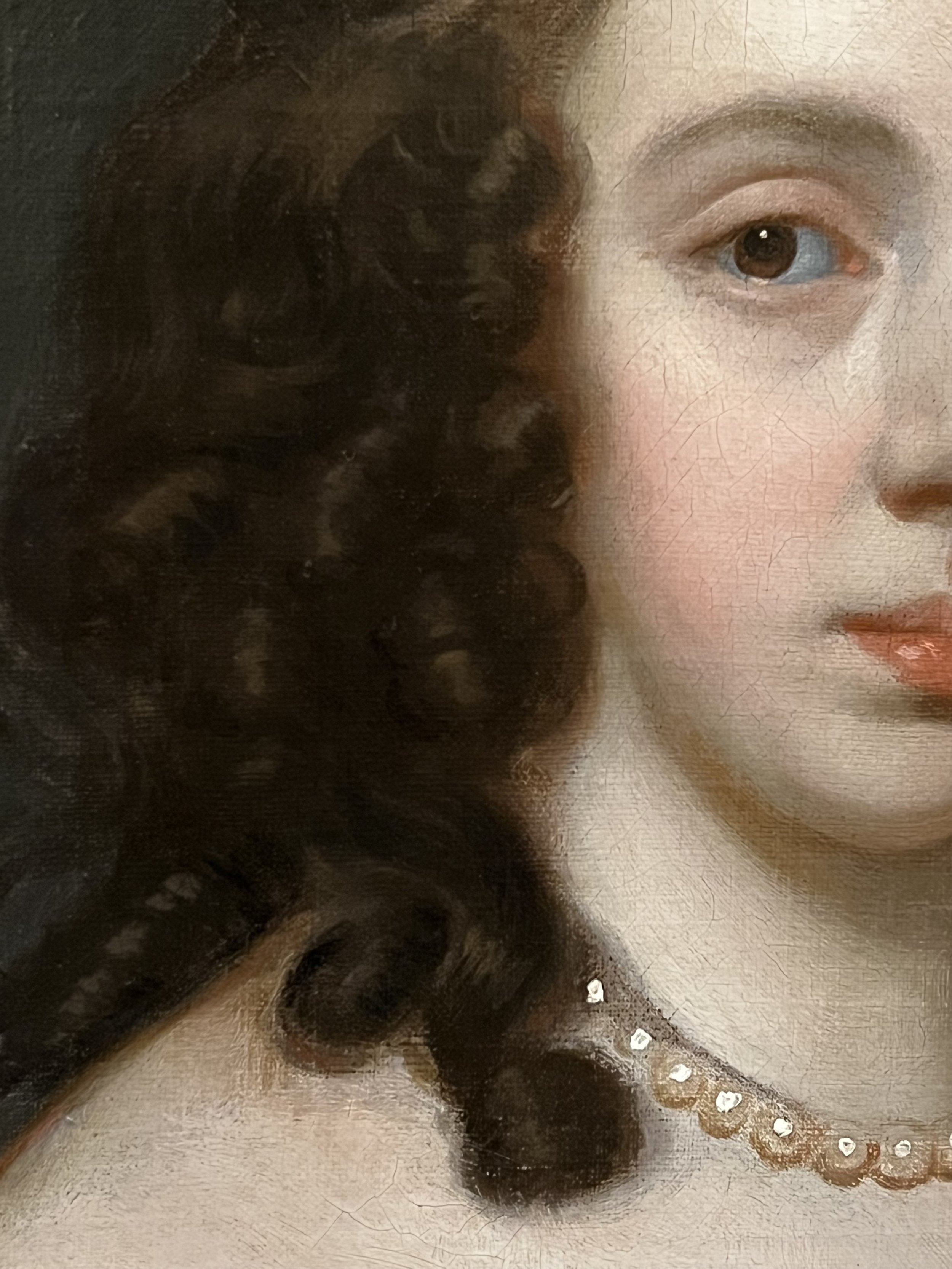
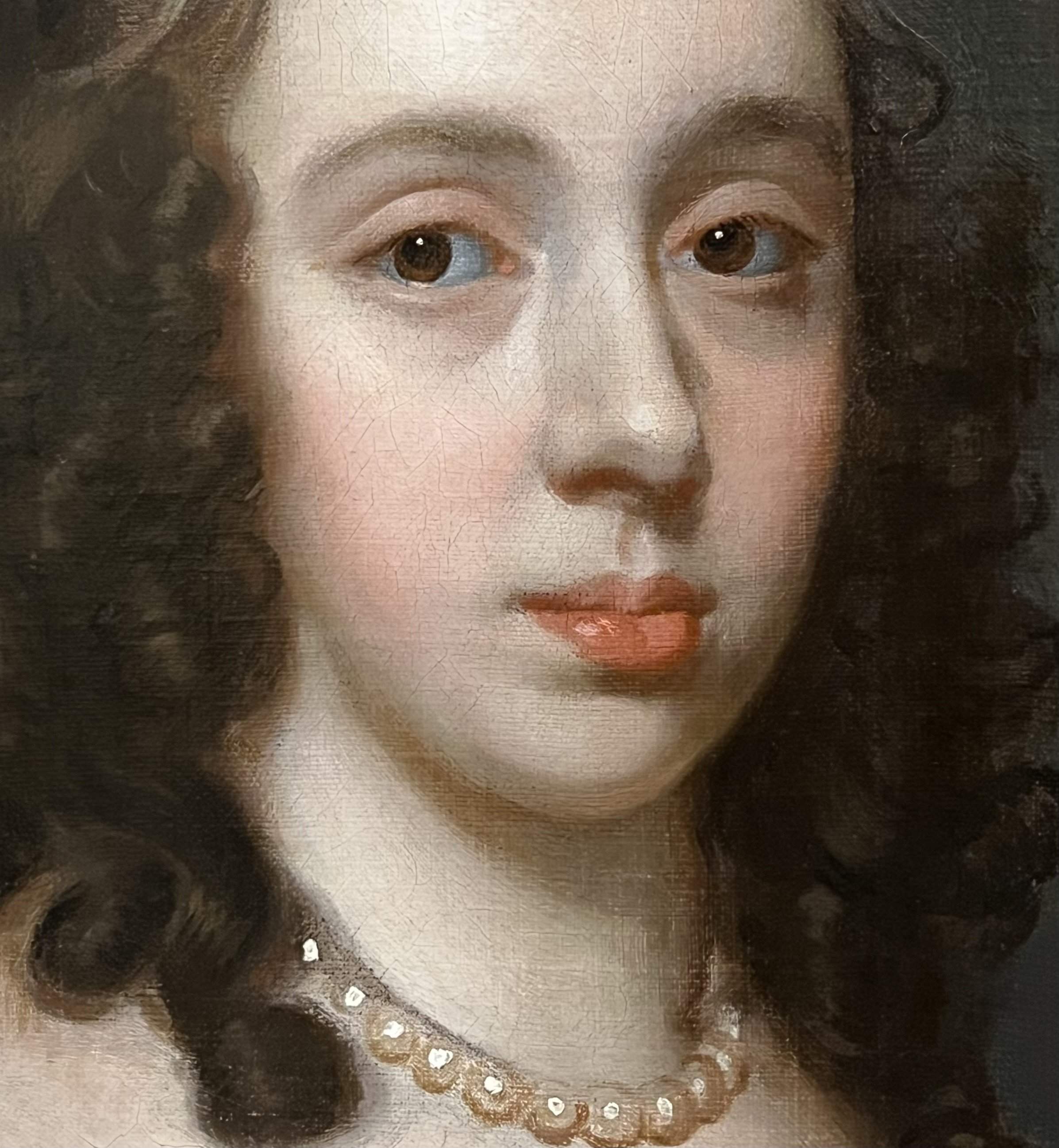
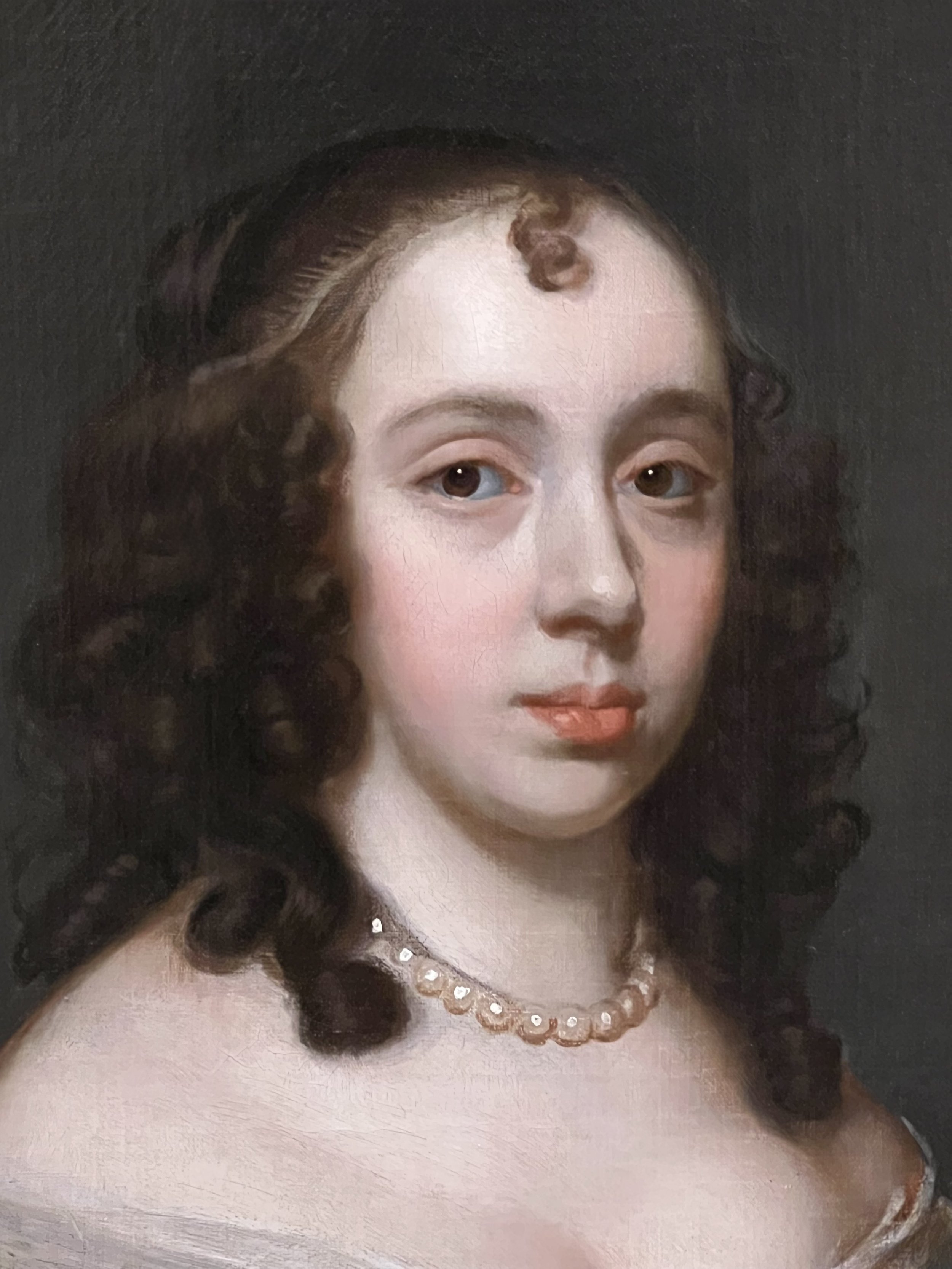
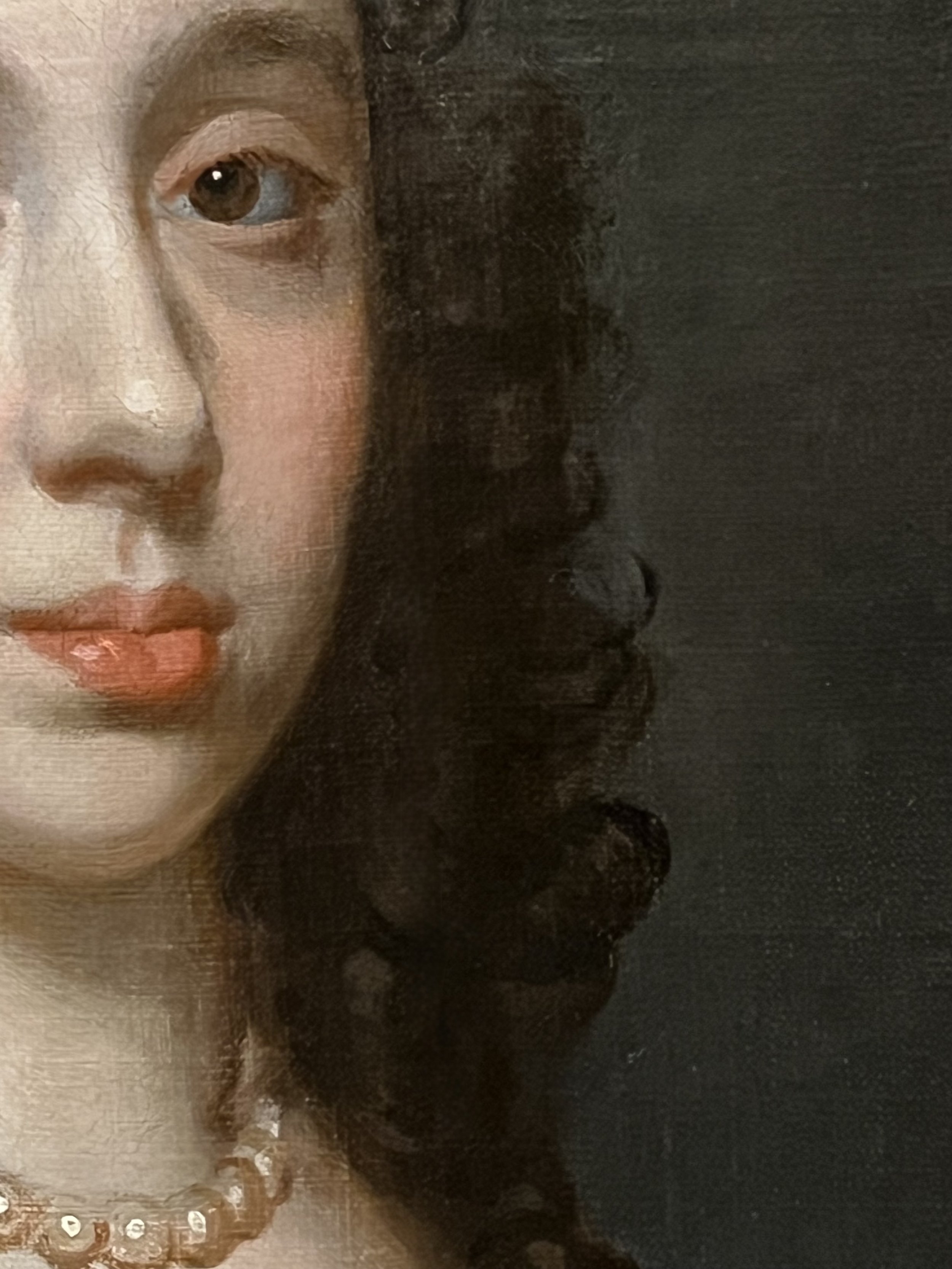
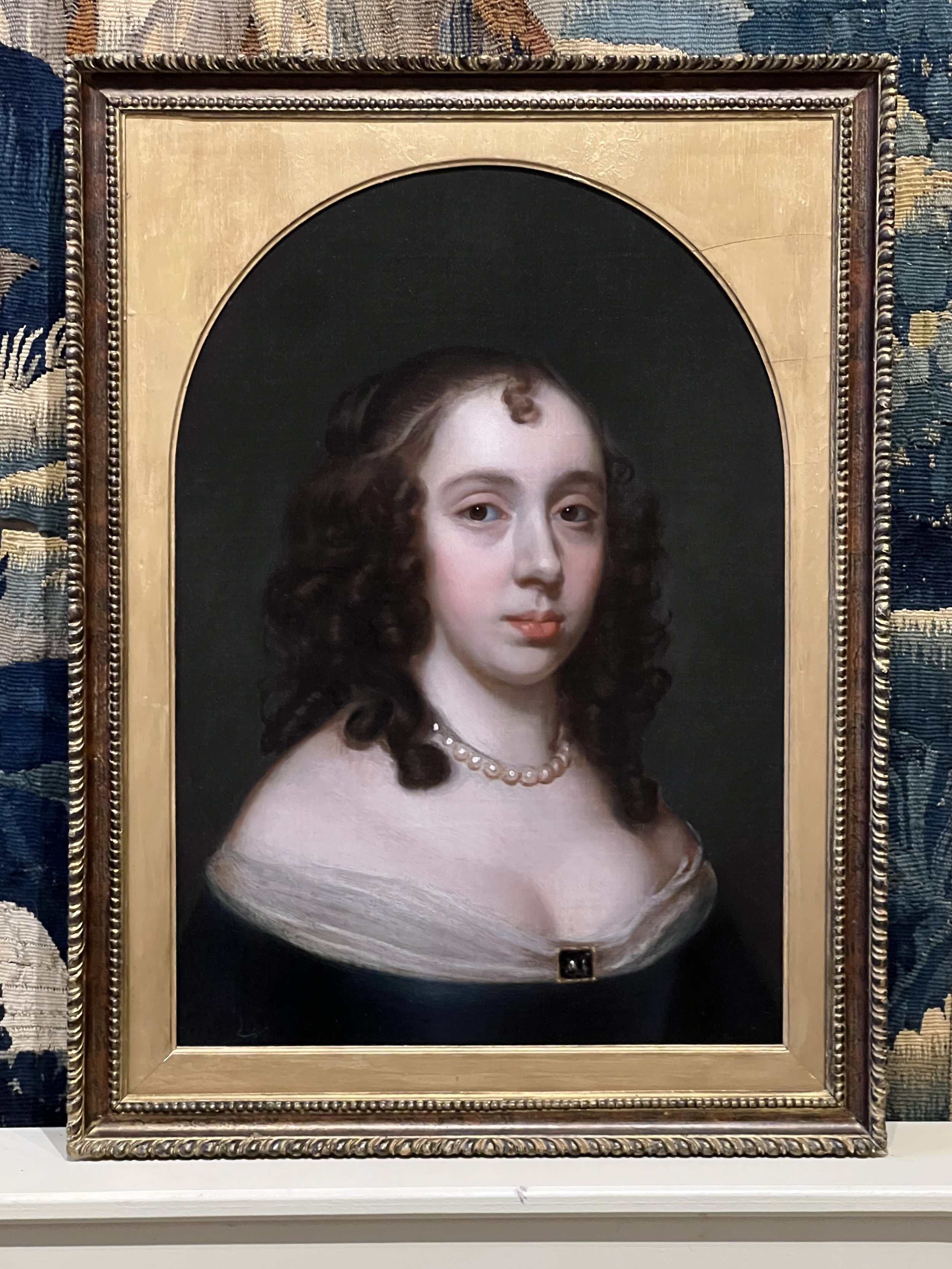
17TH CENTURY ENGLISH PORTRAIT OF A NOBLEWOMAN c. 1655 - BY JOHN HAYLS ( 1600-1679)
A fine and sensitively rendered 17th century oil on panel portrait of a beauty by John Hayls (1600-1679).
The as yet unknown noble sitter is depicted bust length dressed expensively dressed in the high status silk clothing of the period. Her costume has a low and wide neckline that reveals her décolletage., and it is held in place with a single gem set brooch at her bosom. Her luxuriant locks are pinned back, with a single curl at the centre of her forehead whilst others tumble across her shoulder. Her look is completed by a large single strand pearl necklace.
The clothing worn by the lady in this portrait is clearly derived from Van Dyck’s model of dressing his ladies in a manner described by William Sanderson as a ‘careless romance’. In other words, the plain satin fabric is clasped together in a manner unlike that worn in daily dress. This is ‘the norm’ for portraits from the 1640s onwards, as continued into the 1660s by Sir Peter Lely, to impart an air of timelessness and aristocratic ease.
Although this sitter shares the same relatively bold eyebrows, dark eyes, long nose, rouged cheek and full cupid-bow lips as the fashionable ideal. The depiction of her eyes is unlike Lely’s characteristic sleepy and seductive heavy-lidded almond shape. The rather rounded oval eyes, and very dark pupil are of course much more characteristic of Lely’s contemporary John Hayls.
With her jewel studied dress and necklace, it his clear that this beauty had wealth in abundance.
John Hayls (1600-1679) John Hayls (pronounced Hales) ranks as one of the most talented portrait painters in mid-seventeenth century Britain. In spite of this fact, it is surprising perhaps that so few details of his life have survived. Most notably, his portrait of the diarist Samuel Pepys (now in the National Portrait Gallery) has remained the most enduring image of this infamous and iconic figure from the Restoration period.
Like so many during this period, Hayls’s portraits draw heavily on of the works of the prolific Sir Anthony Van Dyck, whose death in 1641 provided large shoes for a new generation of painters to step into. This portrait of an unknown lady is no exception to the rule. The dramatic pose, drapery and setting shows a great indebtedness to the tone set by Van Dyck around fourty years or so before this work was created.
Although unsigned, the case for the attribution to Hayls is most evident in the painterly style executed onto the canvas. The combination of both thin and soft glazes, most evident in the face, contrasted with the bravura in the drapery, is typical of the artist’s work. So too is the landscape to the left of the sitter, which is highly reminiscent of other works by the painter.
Portraits such as these bring to mind the increasing competition between painters during the reign of Charles II. Artists such as the Dutch-born Sir Peter Lely, who also excelled whilst working in this three-quarter length format, presented a significant challenge to English painters like Hayls. It is recorded that the artist missed out on at least one important commission for the Justices of the Guildhall, an honour which was eventually awarded to fellow British artist John Michael Wright.
The painter’s untimely end came in 1679, where it was recorded that ‘comeing from the necessary house, he dropt down dead in the Garden. being drest in a velvet suit to go to a Ld Mayors feast.’
Higher resolution images on request. Worldwide shipping available.
Framed: 25.5" x 19.25" / 66cm x 49cm.
Price: £8,000

